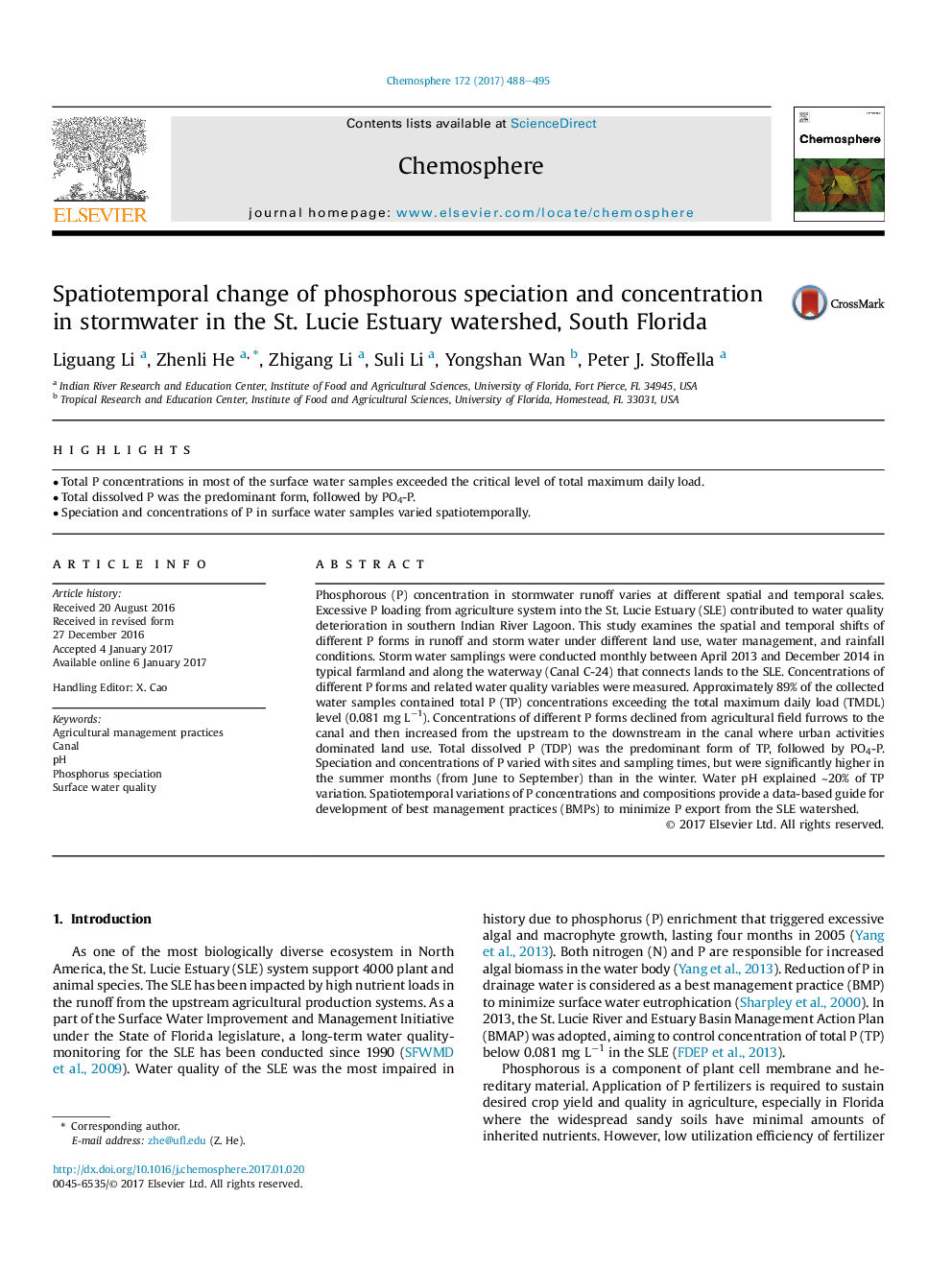| Article ID | Journal | Published Year | Pages | File Type |
|---|---|---|---|---|
| 5747073 | Chemosphere | 2017 | 8 Pages |
Abstract
Phosphorous (P) concentration in stormwater runoff varies at different spatial and temporal scales. Excessive P loading from agriculture system into the St. Lucie Estuary (SLE) contributed to water quality deterioration in southern Indian River Lagoon. This study examines the spatial and temporal shifts of different P forms in runoff and storm water under different land use, water management, and rainfall conditions. Storm water samplings were conducted monthly between April 2013 and December 2014 in typical farmland and along the waterway (Canal C-24) that connects lands to the SLE. Concentrations of different P forms and related water quality variables were measured. Approximately 89% of the collected water samples contained total P (TP) concentrations exceeding the total maximum daily load (TMDL) level (0.081 mg Lâ1). Concentrations of different P forms declined from agricultural field furrows to the canal and then increased from the upstream to the downstream in the canal where urban activities dominated land use. Total dissolved P (TDP) was the predominant form of TP, followed by PO4-P. Speciation and concentrations of P varied with sites and sampling times, but were significantly higher in the summer months (from June to September) than in the winter. Water pH explained â¼20% of TP variation. Spatiotemporal variations of P concentrations and compositions provide a data-based guide for development of best management practices (BMPs) to minimize P export from the SLE watershed.
Related Topics
Life Sciences
Environmental Science
Environmental Chemistry
Authors
Liguang Li, Zhenli He, Zhigang Li, Suli Li, Yongshan Wan, Peter J. Stoffella,
